“It’s clear that for the future generation, we have to act now in a very fast way.”
Picture Credit: Syukuro Manabe, one of winners of the 2021 Nobel Prize in Physics. | Courtesy of Denise Applewhite, Office of Communications / Princeton University
This year’s Nobel Prize in Physics recognizes three scientists for their work in weather and climate modeling and the human effects on global warming.
Syukuro Manabe, Klaus Hasselmann, and Giorgio Parisi received the prestigious award on Tuesday at the annual event in Stockholm. Dr. Manabe and Dr. Hasselmann were awarded for demonstrating how increased levels of carbon dioxide warmed the earth’s surface and creating climate models that linked weather and climate. Dr. Parisi won for his discoveries that progressed the understanding of complex systems.
“The discoveries being recognized this year demonstrate that our knowledge about the climate rests on a solid scientific foundation, based on a rigorous analysis of observations,” said Thors Hans Hansson, chair of the Nobel Committee for Physics.
Each year, Nobel Prizes in peace, medicine, literature, and more are awarded to those that present outstanding contributions that benefit humankind. With the highly anticipated climate conference COP26 approaching in November, youth activists taking to the streets and UN summits, and a daunting Intergovernmental Panel on Climate Change (IPCC) report in August, the climate crisis is at the forefront of global conversations.
And that means the work of the physics prize winners continues to resonate today.
The Winners and Their Work
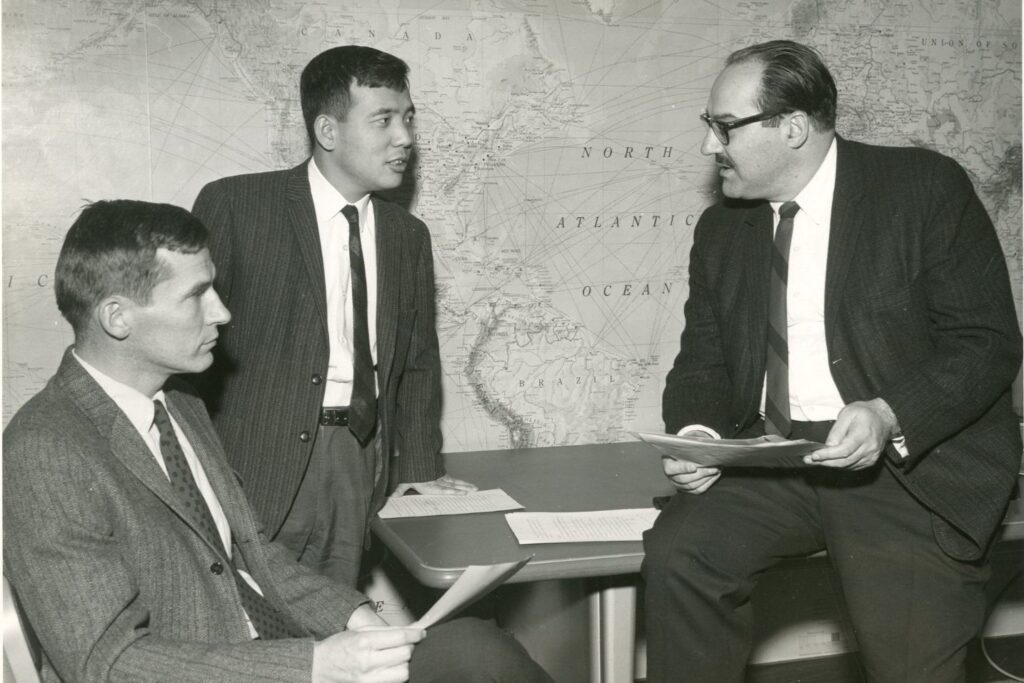
Manabe is a senior meteorologist at Princeton University who has worked in climate science for over 60 years. Manabe was born in Japan in 1931 and immigrated to the US in 1958 to work for the US Weather Bureau. In the 1960s, he worked with Princeton University and the National Oceanic and Atmospheric Administration (NOAA). His work in the ’60s led to the first climate models that showed the effects of human activity on global warming.
“Without the science of climate modeling that [Dr. Manabe] initiated, we might still know that earth’s greenhouse effect was increasing due to human activity and that earth was warming,” said Michael Oppenheimer, professor of Geosciences and International Affairs at Princeton University and founder of the Climate Action Network. “But linking those two facts would be more difficult and projection of the future at any useful level of detail would be impossible.”
In a phone interview with Adam Smith, a chief scientific officer of Nobel Prize Outreach, Manabe explained the importance of understanding climate systems and temperature change and how they influence global patterns such as severe flooding and droughts.
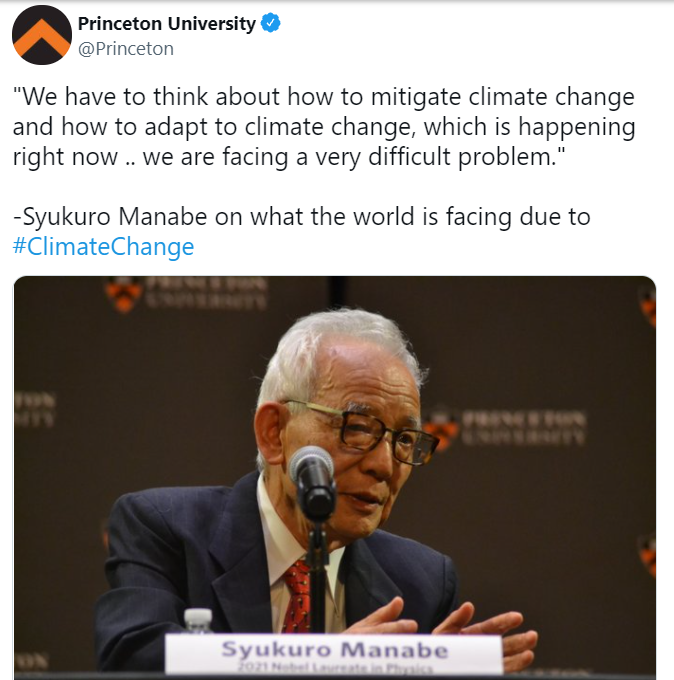
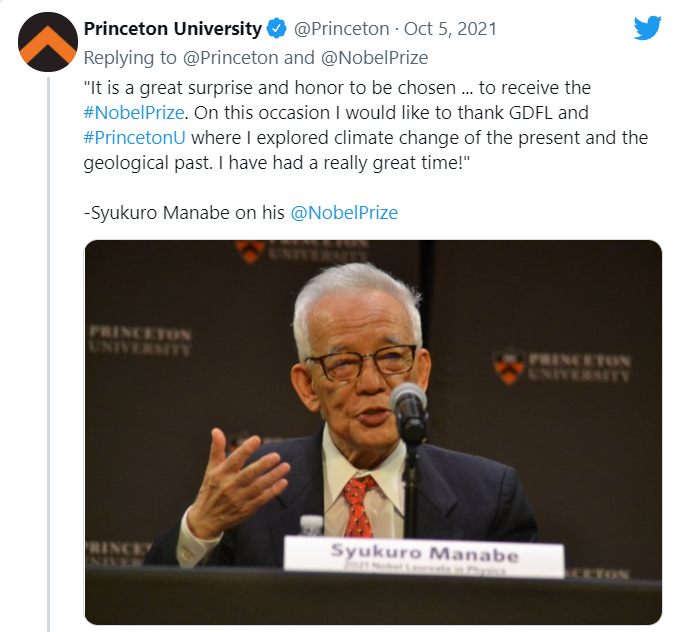
“The prediction of climate change without [an] accompanying understanding of it is no better than [the] prediction of [a] fortune teller,” said Manabe.
Manabe shares the Nobel win with Hasselmann, a German physicist, oceanographer, and professor at the Max Planck Institute for Meteorology in Hamburg. While Manabe’s work in the ’60s laid the groundwork for current climate models, Hasselmann’s work 10 years later confirmed that climate models are reliable for predicting weather even though weather can be unpredictable by nature.
“Hasselmann demonstrated how chaotically changing weather phenomena can be described as rapidly changing noise, thus placing long-term climate forecasts on a firm scientific foundation,” wrote Joanna Rose for the Royal Swedish Academy of Sciences, the organization responsible for awarding Nobel Prizes.
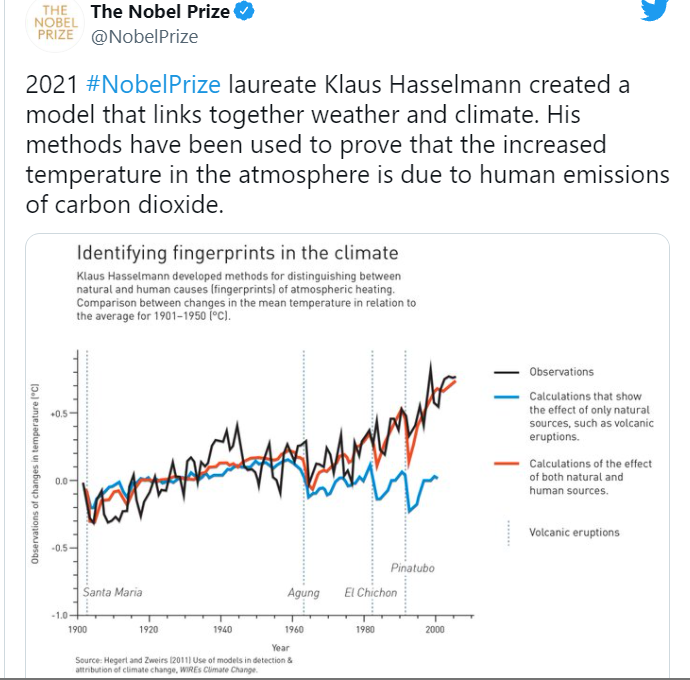
Since his groundbreaking work in weather and climate, the 89-year-old has been a vocal advocate for climate action, stating in 1988: “We should realize that we are entering a situation where there is no turning back.”
Hasselmann’s methods have also been used to prove that the human increase in the output of carbon dioxide has raised the temperature of earth’s atmosphere.
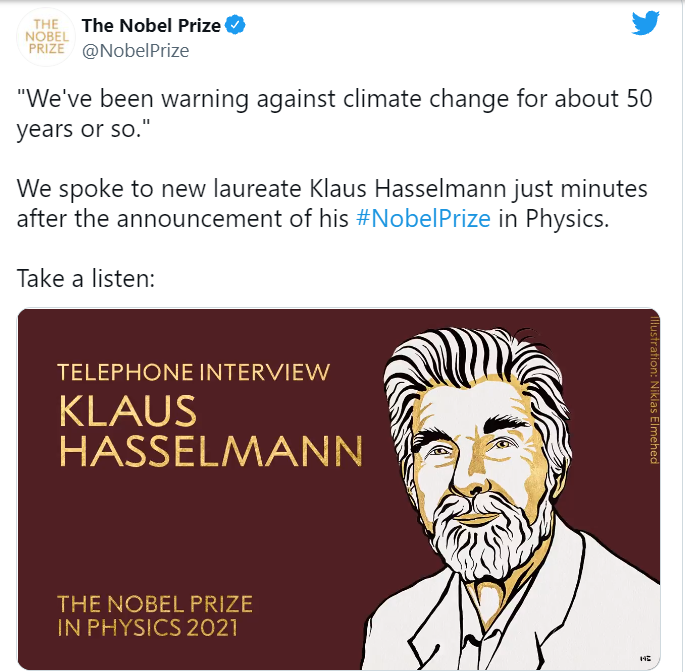
“Most urgently needed is some action against climate change,” said Hasselmann in a phone interview with Nobel Prize Outreach. “I mean, there are many things we can do to prevent climate change, and it’s a whole question of whether people will realize that something which will happen in 20 or 30 years is something which you have to respond to now, and that’s the main problem with climate change.”
Parisi, an Italian theoretical physicist, accepted the shared award for his discoveries “about how apparently random phenomena are governed by hidden rules.” His methods for solving complex systems took years to be proven mathematically correct. He has also applied his studies to questions such as why the earth has recurring ice ages.
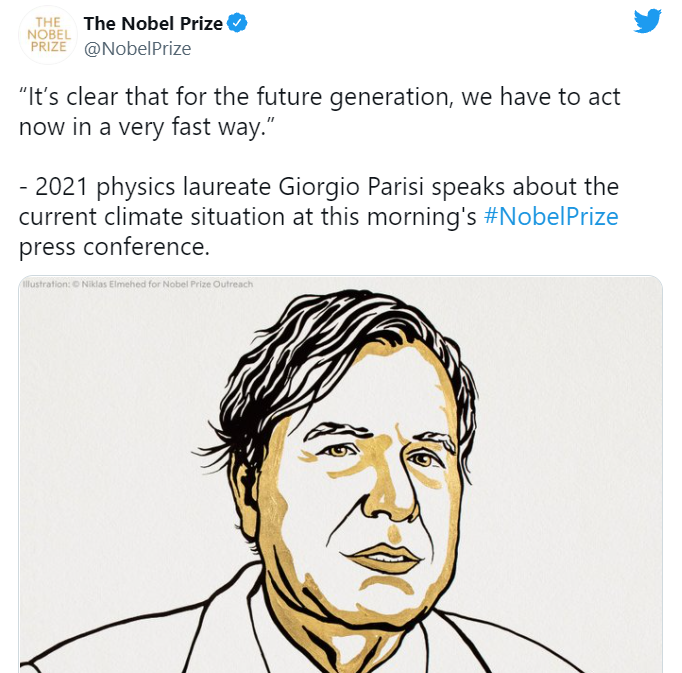
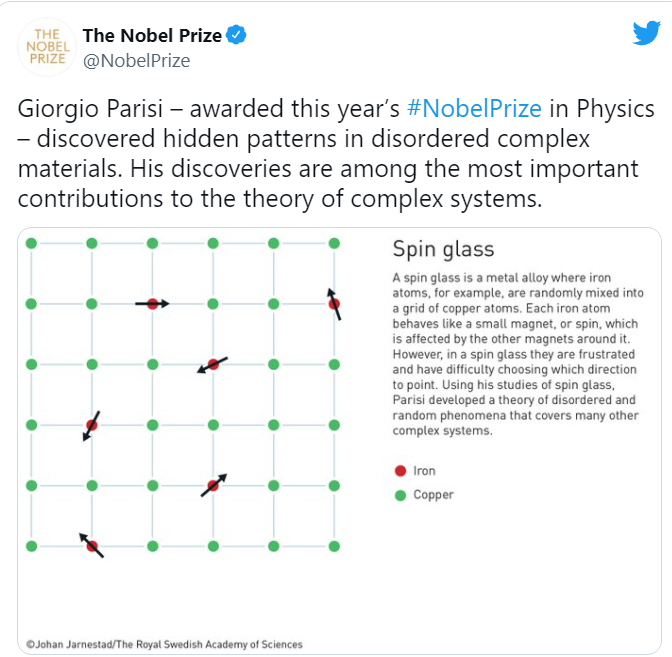
The 10 million krona ($1.14 million USD) prize is split between the three scientists, Manabe and Hasselmann sharing one half and Parisi taking the other. Last year’s award in physics went to three astrophysicists and their work studying black holes.
Why Is This Nobel Prize Important?
Manabe’s work has been instrumental in modern climate models, including the latest IPCC report, which has stressed the need for countries to take immediate action in reducing carbon emissions in order to slow the effects of climate change.
The COP26 conference in November will gather the world’s leaders in a pivotal moment for a concerted effort to mitigate the effects of climate change. Informed by science and predictive models, the choices made right now will impact the future of our planet.
“The climate scientists of today stand on the shoulders of these giants, who laid the foundations for our understanding of the climate system,” said Ko Barrett, senior adviser for climate at NOAA and vice-chair of the IPCC.
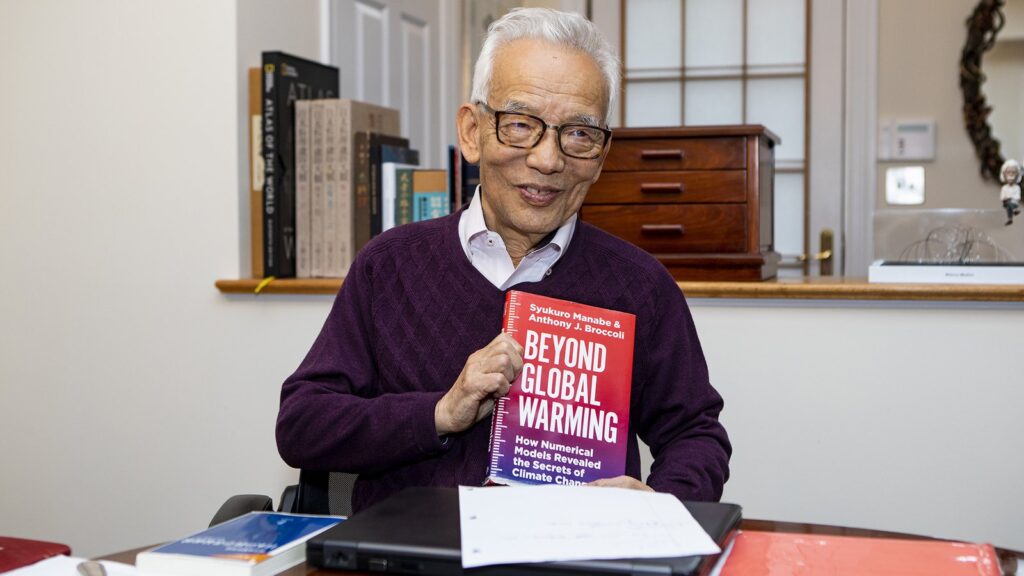
Pingback: Indian-origin mathematician CR Rao honoured with math ‘Nobel Prize’ - SLSV - A global media & CSR consultancy network